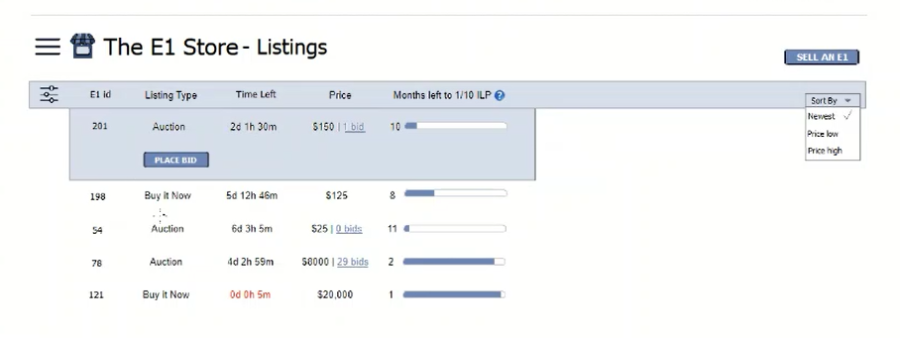Ultimate Guide to e-commerce: Everything You Need to Know
•e-commerce

Introduction to e-commerce
Welcome to our comprehensive guide on e-commerce in the PRODUCTS industry. In 2025, understanding e-commerce has become more important than ever for businesses and individuals looking to stay ahead of the competition. This guide will walk you through everything you need to know about e-commerce strategies and best practices, providing actionable insights and expert tips.
Whether you're a beginner just getting started with e-commerce or an experienced professional looking to refine your approach, this article will provide valuable information to help you succeed. We'll cover the fundamentals, advanced techniques, best practices, and emerging trends in the world of e-commerce, giving you a solid foundation to build upon.
The landscape of e-commerce has evolved dramatically over the past few years, with new technologies, methodologies, and approaches emerging regularly. Understanding these changes and how to leverage them effectively is crucial for anyone looking to maximize their success with e-commerce. This comprehensive guide will ensure you have all the knowledge and tools necessary to excel in this dynamic field.
What is e-commerce?
e-commerce refers to the set of techniques, strategies, and practices used to achieve specific goals in various contexts in the PRODUCTS industry. At its core, e-commerce involves understanding user needs, analyzing data, and implementing solutions that drive results. The field has seen significant advancements in recent years, with new tools and technologies making it more accessible and effective than ever before.
The concept of e-commerce has evolved significantly over time. What started as a simple set of practices has grown into a complex discipline with multiple facets and applications. Today, e-commerce encompasses a wide range of activities that require specialized knowledge and skills, from technical implementation to strategic planning and creative problem-solving.
Understanding the fundamental principles of e-commerce is essential for success in today's competitive environment. These principles serve as the foundation upon which all effective e-commerce strategies are built, providing a framework for decision-making and implementation that can be adapted to various situations and contexts.
The History and Evolution of e-commerce
The origins of e-commerce can be traced back several decades, when early pioneers began developing the foundational concepts that would eventually evolve into the sophisticated discipline we know today. Initially, e-commerce was a relatively simple process, but as technology advanced and markets became more complex, the field expanded to encompass a much broader range of activities and considerations.
Throughout the 1990s and early 2000s, e-commerce underwent significant transformation as the internet revolutionized how businesses and individuals approached their goals. This digital revolution brought new opportunities and challenges, requiring practitioners to adapt their strategies and develop new skills to remain effective in an increasingly connected world.
The modern era of e-commerce began in the late 2000s with the emergence of social media, mobile technology, and big data analytics. These developments fundamentally changed the landscape, creating new possibilities for engagement, measurement, and optimization that were previously unimaginable. Today, e-commerce continues to evolve at a rapid pace, driven by advances in artificial intelligence, machine learning, and automation.
Key Benefits of e-commerce
Implementing effective e-commerce strategies can provide numerous advantages for businesses and individuals alike. These benefits extend far beyond immediate results, creating long-term value and competitive advantages that can sustain success over time.
Increased Efficiency and Productivity
One of the most significant benefits of e-commerce is its ability to streamline processes and eliminate inefficiencies. By implementing proven e-commerce methodologies, organizations can reduce waste, optimize resource allocation, and achieve better results with less effort. This increased efficiency translates directly into improved productivity and cost savings.
Modern e-commerce approaches leverage automation and intelligent systems to handle routine tasks, freeing up human resources to focus on higher-value activities. This shift not only improves overall efficiency but also enhances job satisfaction and enables teams to tackle more strategic and creative challenges.
Enhanced Results and Performance
Properly executed e-commerce techniques consistently lead to improved outcomes across all key performance indicators. Whether the goal is to increase revenue, boost engagement, enhance customer satisfaction, or improve operational metrics, e-commerce provides the framework and tools necessary to achieve measurable improvements.
The data-driven nature of modern e-commerce ensures that decisions are based on solid evidence rather than guesswork. This analytical approach enables continuous optimization and refinement, leading to progressively better results over time. Organizations that embrace this methodology often see compound improvements that far exceed their initial expectations.
Competitive Advantage
In today's fast-paced business environment, staying ahead of the competition requires more than just keeping up with industry trends. Effective e-commerce implementation provides a sustainable competitive advantage by enabling organizations to respond more quickly to market changes, identify opportunities before competitors, and deliver superior value to their target audience.
Companies that excel at e-commerce often become industry leaders, setting standards that others struggle to match. This leadership position creates additional benefits, including increased brand recognition, customer loyalty, and market share, which further reinforce their competitive advantage.
Essential Components of Successful e-commerce
Successful e-commerce implementation requires careful attention to several key components, each of which plays a crucial role in achieving desired outcomes. Understanding these components and how they work together is essential for developing effective strategies and avoiding common pitfalls.
Strategic Planning and Goal Setting
Every successful e-commerce initiative begins with clear strategic planning and well-defined goals. This foundation provides direction and focus, ensuring that all activities align with broader objectives and contribute to meaningful outcomes. Without proper planning, even the most sophisticated e-commerce techniques are unlikely to deliver their full potential.
Effective goal setting involves establishing specific, measurable, achievable, relevant, and time-bound (SMART) objectives that provide clear benchmarks for success. These goals should be regularly reviewed and adjusted as circumstances change, ensuring that e-commerce efforts remain aligned with evolving business needs and market conditions.
Data Analysis and Insights
Modern e-commerce is fundamentally data-driven, relying on comprehensive analysis to inform decision-making and guide strategy development. This analytical approach enables practitioners to identify patterns, trends, and opportunities that might otherwise go unnoticed, leading to more effective and targeted interventions.
The key to successful data analysis in e-commerce lies not just in collecting information, but in transforming raw data into actionable insights. This requires sophisticated analytical tools, skilled interpretation, and the ability to translate findings into practical strategies that drive real-world results.
Best Practices for e-commerce in 2025
To maximize the effectiveness of your e-commerce initiatives, it's essential to follow proven best practices that have been refined through years of experience and continuous improvement. These practices provide a roadmap for success while helping you avoid common mistakes that can undermine your efforts.
Start with Clear Objectives
Before implementing any e-commerce strategy, take time to clearly define what you want to achieve. These objectives should be specific enough to guide decision-making but flexible enough to accommodate changing circumstances. Well-defined objectives serve as a north star, keeping your efforts focused and aligned with your broader goals.
Embrace Continuous Learning
The field of e-commerce is constantly evolving, with new techniques, tools, and best practices emerging regularly. Successful practitioners make continuous learning a priority, staying current with industry developments and adapting their approaches accordingly. This commitment to ongoing education ensures that your e-commerce strategies remain effective and competitive.
Implement Gradually and Test Thoroughly
Rather than attempting to implement comprehensive e-commerce changes all at once, adopt a gradual approach that allows for testing and refinement. This methodology reduces risk while providing opportunities to learn and optimize before full-scale deployment. Start with pilot programs or limited implementations, gather feedback, and scale successful approaches systematically.
Measure and Optimize Continuously
Effective e-commerce requires ongoing measurement and optimization. Establish key performance indicators (KPIs) that align with your objectives, implement robust tracking systems, and regularly review performance data to identify areas for improvement. This continuous optimization cycle ensures that your e-commerce efforts become more effective over time.
Common Challenges and How to Overcome Them
While e-commerce offers tremendous potential for success, implementation often comes with challenges that can hinder progress if not properly addressed. Understanding these common obstacles and developing strategies to overcome them is crucial for achieving your e-commerce objectives.
Resource Constraints
Limited budgets, time constraints, and skill gaps are among the most common challenges facing e-commerce practitioners. Overcoming these constraints requires creative problem-solving, strategic prioritization, and efficient resource allocation. Focus on high-impact activities that deliver the greatest return on investment, and consider partnerships or outsourcing for specialized capabilities.
Resistance to Change
Organizational resistance to new e-commerce approaches can significantly impede progress. Address this challenge through effective change management, clear communication of benefits, and gradual implementation that allows stakeholders to adapt comfortably. Involve key stakeholders in the planning process and provide adequate training and support throughout the transition.
Technical Complexity
The increasing sophistication of e-commerce tools and techniques can create barriers for organizations lacking technical expertise. Overcome this challenge by investing in training, partnering with experienced providers, or starting with simpler approaches before advancing to more complex implementations. Remember that effective e-commerce is more about strategy and execution than technical sophistication.
Future Trends and Innovations in e-commerce
The future of e-commerce promises exciting developments that will reshape how practitioners approach their work. Staying informed about these trends and preparing for their impact is essential for maintaining competitive advantage and maximizing long-term success.
Artificial Intelligence and Machine Learning
AI and machine learning technologies are revolutionizing e-commerce by enabling more sophisticated analysis, prediction, and automation. These technologies can process vast amounts of data, identify complex patterns, and generate insights that would be impossible for humans to discover manually. As these tools become more accessible, they will fundamentally change how e-commerce is practiced.
Personalization and Customization
The trend toward personalization is transforming e-commerce from a one-size-fits-all approach to highly customized strategies tailored to individual needs and preferences. Advanced analytics and AI enable unprecedented levels of personalization, creating opportunities for more effective and engaging e-commerce implementations.
Integration and Automation
Future e-commerce systems will be increasingly integrated and automated, seamlessly connecting with other business processes and systems. This integration will enable more holistic approaches that consider the full context of organizational goals and constraints, leading to more effective and efficient outcomes.
Tools and Technologies for e-commerce
Success in modern e-commerce requires leveraging the right tools and technologies to support your strategies and objectives. The landscape of available solutions is vast and constantly evolving, making it important to understand the key categories and selection criteria.
When selecting e-commerce tools, consider factors such as functionality, ease of use, integration capabilities, scalability, and cost. The best tools are those that align with your specific needs and objectives while providing room for growth and adaptation as your requirements evolve.
Popular categories of e-commerce tools include analytics platforms, automation systems, content management solutions, and collaboration tools. Each category serves specific purposes and offers unique benefits, making it important to develop a comprehensive toolkit that addresses all aspects of your e-commerce strategy.
Measuring Success in e-commerce
Effective measurement is crucial for e-commerce success, providing the insights needed to optimize performance and demonstrate value. Developing a comprehensive measurement framework requires careful consideration of objectives, available data, and stakeholder needs.
Key performance indicators (KPIs) should be selected based on their relevance to your objectives, their measurability, and their ability to drive actionable insights. Common e-commerce metrics include efficiency measures, quality indicators, engagement metrics, and financial outcomes, though the specific metrics will vary based on your goals and context.
Regular reporting and analysis are essential for maintaining momentum and identifying opportunities for improvement. Establish a consistent reporting schedule that provides stakeholders with timely insights while allowing sufficient time for meaningful analysis and interpretation.
Building a e-commerce Team
Successful e-commerce implementation often requires a skilled team with diverse expertise and complementary skills. Building and managing this team effectively is crucial for achieving your objectives and maintaining long-term success.
Key roles in a e-commerce team typically include strategic planners, analysts, technical specialists, and project managers. The specific composition will depend on your objectives, scope, and available resources, but ensuring adequate coverage of all essential functions is important for comprehensive success.
Team development should focus on both technical skills and soft skills, including communication, collaboration, and problem-solving abilities. Regular training and professional development opportunities help maintain team effectiveness and adapt to evolving requirements and technologies.
Conclusion: Mastering e-commerce for Long-term Success
e-commerce continues to evolve as a critical component of success in the PRODUCTS industry, offering tremendous opportunities for those who approach it strategically and systematically. By understanding the fundamentals, implementing best practices, leveraging appropriate tools and technologies, and maintaining a commitment to continuous improvement, you can harness the full potential of e-commerce to achieve your goals.
Remember that effective e-commerce is not a one-time effort but an ongoing process of learning, implementation, measurement, and refinement. Success requires patience, persistence, and adaptability, as well as a willingness to embrace new approaches and technologies as they emerge.
As you embark on or continue your e-commerce journey, focus on building strong foundations, developing comprehensive strategies, and maintaining a long-term perspective. With dedication and the right approach, you can master e-commerce and achieve sustainable success that creates lasting value for your organization and stakeholders.
The future of e-commerce is bright, with new opportunities and innovations emerging regularly. By staying informed, remaining adaptable, and continuing to invest in your e-commerce capabilities, you can position yourself and your organization for continued success in this dynamic and rewarding field.
Tim Moseley


.png)
.png)


.png)







.png)

.png)









.jpeg)
.jpeg)



%20copy.png)
.png)






.png)
.png)





.png)





.png)